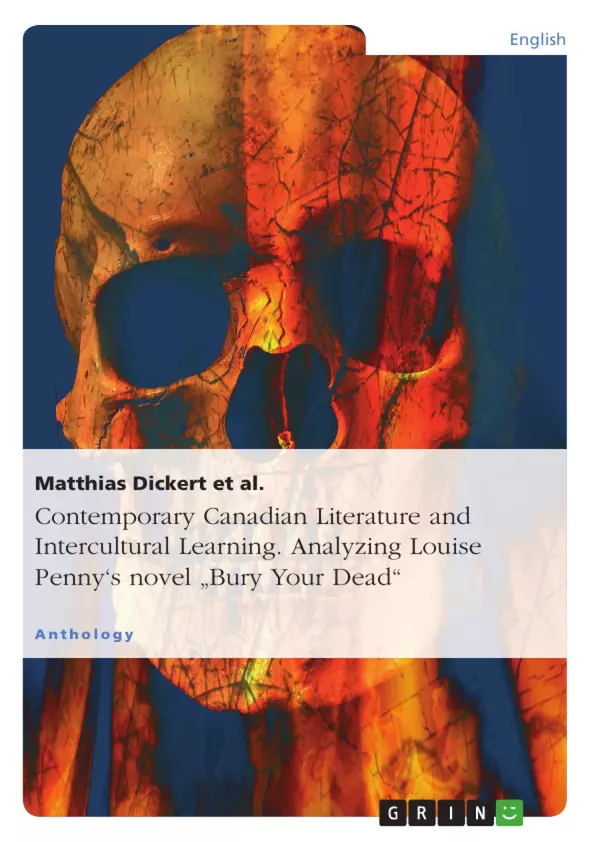Canada has only recently become a topic of literary interest in modern grammar schools in Hessen. It was thus logical that schools, teachers and students were confronted with a fairly unknown topic that belongs to what is referred too as English-speaking literature. Canadian literature is, strictly speaking, part of what is commonly considered to be ‘Literature of the Colonies‘, a term that sums up literature from Africa, Asia, Australia, Canada and New Zealand.
Canada in this respect still holds a key position for European readers simply because of its historic links to England and France and its deep roots in native elements, all of which seem to have enriched its historical, cultural and literary variety. All three influences have contributed to the key term of present Canadian literature which seems to focus on the concept of survival and its manifold presentations in past and present day Canadian writing.
It is thus not astonishing to spot this notion of survival in all types of writing, and detective stories, in general, also do not seem to be an exception. It is therefore natural for the reader to trace and find this notion in Louise Penny’s novels, too.
Louise Penny herself is considered to be one, if not the most outstanding contemporary Canadian representative of this type of writing, and it was simply a question of time when she came into the focus of public attention. Books like Still Life (2005), Dead Cold (2006), The Cruellest Month (2007), The Murder Stone (2008), The Brutal Telling (2009), Bury Your Dead (2010), A Trick of the Light (2011) soon gained her the reputation of a fine writer.
Most of her novels, however, include another aspect central for modern language learning in the socalled Oberstufe.
The talk here is about what is generally called ‘Intercultural Teaching and Learning‘ because the critical reader working here gains a lot of historical, cultural and social insight into Canada and the Canadian soul. It is at this crossroad where Penny steps in. With the elegance of a Shakespearian pen of the 21st century she presents various characters and thus teachers and students alike can learn a lot about the different dimensions – individual and collective – of the Canadian psyche. This results in knowledge, feeling and respect for Canada and Canadian mentality which are conveyed in a convincing and authentic way.
Inhaltsverzeichnis (Table of Contents)
- Preface
- Louise Penny's E-mail
- Matthias Dickert: Intercultural Learning
- Matthias Dickert: The author
- Matthias Dickert: Detective Stories
- Students' topics (listed up alphabetically)
- Jan Frederik Beyer: Québec - Confident Francophone Nation within Canada between Federal Partnership and Sovereignity
- Antonia Bunde: Louise Penny Bury Your Dead
- Lars Fiedler: France in America – the culturally exceptional position of Quebeck
- Sarah Höhn: Les Têtes à Papineau
- Sarah G. Holzmann: Independence of- and different cultural identities in Canada
- Jan Kaufeld: French-Canadian identity in Québec
- Julius Kinzig: Frenchmen in Canada
- N. N: To die in French
- Vanessa Massling: Je me souviens - History of the Québec-problem
- Matthias Muth: New France - More than 200 years of French
- Marcel Sebbin: The Forgotten Literature: The Angloquebeccer Literature
- Nicole Siwiak: The matter with the two languages
- Lena Wagner: French Canadians
- Luca Werner: France in the United States of America
- Simone Wirth: Québec - Between identity and plurality
- Marco Zellmann: The Franco-Canadian time bomb
- Conclusion
Zielsetzung und Themenschwerpunkte (Objectives and Key Themes)
This book explores the growing significance of Canadian literature in contemporary German grammar schools, focusing on Louise Penny's novel Bury Your Dead (2010) as a case study for intercultural learning. The main objective is to highlight the value of Penny's work for understanding the complex cultural and historical landscape of Canada. Key themes discussed in the book include:- The multifaceted identity of Canada, influenced by its English and French heritage and Indigenous roots.
- The enduring concept of survival in Canadian literature, exploring its manifestations in past and present writing.
- The unique position of Québec within Canada, its Francophone identity, and the ongoing debate about sovereignty.
- The potential of Canadian literature to facilitate intercultural learning and understanding within educational settings.
- The role of detective stories in reflecting broader societal concerns and cultural dynamics.
Zusammenfassung der Kapitel (Chapter Summaries)
This section presents a brief overview of the book's chapters, highlighting key themes and arguments.- The preface introduces the growing interest in Canadian literature in German schools and emphasizes the importance of considering Canadian literature within the context of "Literature of the Colonies".
- The chapter titled "Louise Penny's E-mail" recounts Penny's encouragement for this project, underscoring her significance in contemporary Canadian writing.
- The chapter "Matthias Dickert: Intercultural Learning" explores the potential of Penny's works for fostering intercultural understanding and appreciation for Canada.
- The chapter "Matthias Dickert: The author" provides a brief biography of Louise Penny, highlighting her background and literary achievements.
- The chapter "Matthias Dickert: Detective Stories" examines the genre of detective stories and their role in reflecting social and cultural dynamics in Canada.
- The chapter "Students' topics" presents various essays written by students exploring diverse aspects of Canada's history, culture, and identity. These topics range from Québec's unique Francophone position within Canada to the influence of French colonialism on Canadian culture and literature.
Schlüsselwörter (Keywords)
This book focuses on the intersection of Canadian literature, intercultural learning, and the cultural and historical identity of Canada. Key themes include:- Canadian Literature
- Intercultural Learning
- Canadian Identity
- Québec
- Francophone Culture
- Detective Stories
- Quote paper
- Matthias Dickert et al. (Author), 2013, Contemporary Canadian Literature and Intercultural Learning. Analyzing Louise Penny's novel "Bury Your Dead", Munich, GRIN Verlag, https://www.grin.com/document/264276



